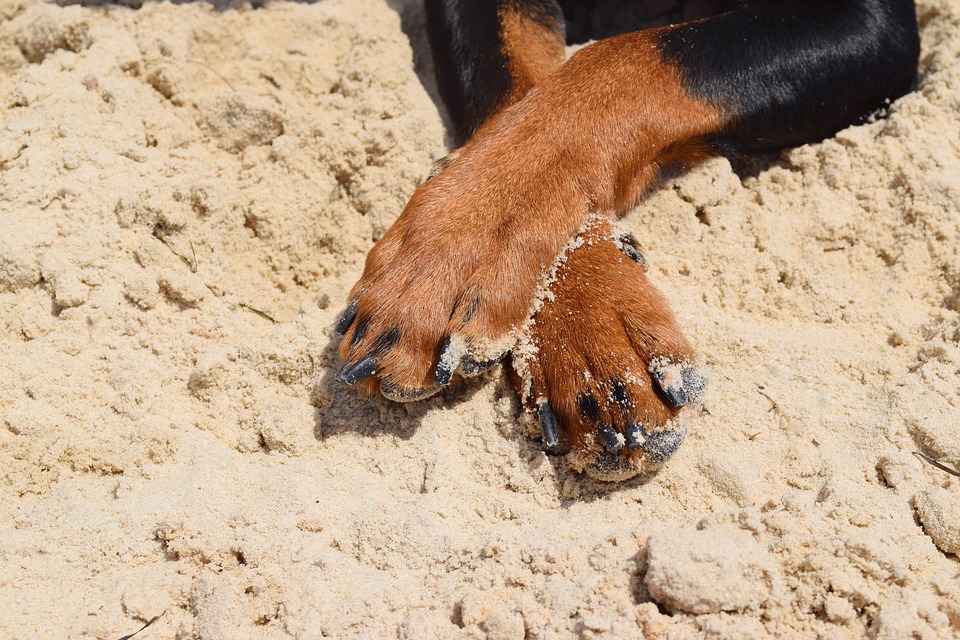 Many dog owners avoid nail trimming because they are afraid of “quicking’ the dog, or that the dog fusses and creates bad feelings around the procedure. Nail cutting can become an event surrounded by angst and drama. Unless your pup is an active outdoors dog, nail trimming on a regular basis is necessary. While high mileage wears nails down naturally, among city and suburban dogs who are lucky to get a mile or two walk daily, excessively long nails are more common than not.
Many dog owners avoid nail trimming because they are afraid of “quicking’ the dog, or that the dog fusses and creates bad feelings around the procedure. Nail cutting can become an event surrounded by angst and drama. Unless your pup is an active outdoors dog, nail trimming on a regular basis is necessary. While high mileage wears nails down naturally, among city and suburban dogs who are lucky to get a mile or two walk daily, excessively long nails are more common than not.
Types of Nail Trimmers
There are numerous types of nail trimmers. Be sure to purchase good quality trimmers that are sharp and designed for the correct size dog. The nail trimmers should be concave at the cutting edge to avoid crushing the nail. Blunt or poor quality trimmers can split the nail. Nails that are not long but are sharp can simply be filed or you can use a pumice stone to take off the tips. A dremel is commonly used to slowly burr down the nails, which can be more gradual and safer than clipping.
How to Safely Trim
Once you’re ready to trim your dog’s nails, choose some favorite training treats to keep nearby. Also, make sure to have a small jar of styptic powder and some cotton balls on hand. This is only a precaution because cutting the quick is unlikely if you are careful. Patting the styptic power around the nail base will stop any bleeding, should this occur. Begin by finding a comfy spot with nice, bright lighting. Get your pup in a relaxed position, either standing or reclining on the floor.
Clipper Method
- Hold the clippers in your dominant hand.
- Hold your dog’s paw firmly in your other hand — thumb on the foot bad, fingers atop the foot, near the nail bed.
- Start at the very tip — especially if your dog has dark nails.
- Only trim about 1 to 2 mm at a time, gradually moving toward the quick.
- Examine the cross-section of your pup’s nail each time you cut. When a tan-colored oval starts becoming visible, you’re nearing the quick so you can stop cutting.
- Use a nail file to smooth rough edges.
Grinder Method
- Similar to clippers, hold the tool in your dominant hand with your dog’s paw firmly in your other hand.
- Gently touch the grinder to the tip of your pup’s nail and silently count to two.
- Remove the grinder for a few seconds and praise your pup, and then repeat.
- Continue this process until you begin seeing the tan-colored oval, then stop.
Working with Black Nails
If your pet has black nail look at the underside of the nail and you will notice that towards the tip the nail separates out into a triangular shape with two outer ‘walls’. At this point, there is no quick and it is safe to cut the tip off. Otherwise, the technique of simply cutting straight across from the pad should be used, rather than attempting to cut up at a 45° angle. Another trick is to apply gentle pressure with the nail trimmers without actually cutting where you think you need to cut. If your pup reacts to the pressure, you are most likely too close to the quick and will need to move the clippers further down the nail.
What if I Make the Nails Bleed?
Styptic powder can be used if you accidentally cut your dog’s nails too short, or simply use a clean bar of soap and run it under the damaged nail. The soap will plug the vessel and stop the bleeding. Generally if you have made your dog bleed, they will be a bit nervous at the time, so make sure you have plenty of treats available and take it slow.
Old Dogs or Deformed Nails
Older dogs tend to end up with long quicks, elongated nails and often extremely hard nails. If there has been some sort of trauma to the nail bed, nails can grow back a bit deformed, such as when the dew claw has been caught in something and torn.
The hardness issue can be solved by clipping after bathing, as the nails will be softer. Making sure you just take the tips off the nails or cut them so they sit just above the floor when your dog is standing can help to ensure you don’t cut deformed nails too short.
On the other hand, if you gradually take the tips off, you can often make the quick recede a little over time, but you will need to be patient. As long as your pup’s nails are not touching the floor, getting caught in anything and causing the toes to splay out or bend, there is no need to worry too much about keeping them extremely short.
Make sure to be extremely patient, go slowly and offer plenty of praise and/or training treats. Never trim your dog’s nails when you are in a rush. Similarly, if you start seeing canine stress signals like yawning, take a calming break. There are no rules stating that you need to do all four paws at once. For more information or assistance on trimming your dog’s nails, don’t hesitate to contact us here at All Pets Veterinary Medical Center with the link below!
















Alfred Hanna liked this on Facebook.
Jessica Trinque liked this on Facebook.